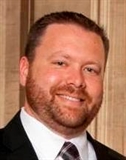How Embedded Telematics Improves Vehicle Performance For Fleet Managers
How Embedded Telematics Improves Vehicle Performance for Fleet Managers
 From OEM construction machinery to mining equipment, machine performance is a key consideration for construction fleet operations large and small. However, for most decision-makers, any discussion of machine performance centers on efficiency. While efficiency is crucial, it involves several factors that impact the outcome. In this post, we’ll explore machine efficiency and the role telematics can play in improving it.
From OEM construction machinery to mining equipment, machine performance is a key consideration for construction fleet operations large and small. However, for most decision-makers, any discussion of machine performance centers on efficiency. While efficiency is crucial, it involves several factors that impact the outcome. In this post, we’ll explore machine efficiency and the role telematics can play in improving it.
Factors That Go into Machine Performance
Machine performance cannot be quantified as a single metric. It is more than fuel efficiency or uptime, or even operating efficiency over time. “Performance” is an aggregate that must take into account a vast range of factors, from operator performance to idle time that might increase fuel consumption. The challenge for most fleet operations is achieving the bird’s eye view required to understand performance as an aggregate in the first place.
The Role of Embedded Telematics
At its heart, telematics is nothing more than a module that leverages onboard sensors to track OEM machine performance, operating time, speed, and other factors, and then transmits that data to a central location for collection and visualization. With the right telematics solution, fleet operations can delve deep into performance-related information and identify key challenges that affect operating costs, maintenance costs, machine lifespan, productivity, and more.
How Can Telematics Improve Machine Performance?
The key to telematics’ value for fleet operations is in visualizing the data from machines in the field and acting immediately. At a high level, telematics is always the same – data collection, storage, visualization, etc. However, each use case and implementation will focus on unique data elements and applications that drive value specific to the fleet operation. An OEM who shares these and other value drivers to demonstrate support for customer success can differentiate offerings, be positioned as a thought leader and gain loyalty for a sustainable business.
Below, we highlight just some of the more common areas that telematics can be applied to improve vehicle performance.
Fuel Usage: Fuel consumption is a considerable cost for all fleet operations. By tracking fuel consumption, it becomes possible to identify areas of waste, such as engine idling for long periods. It is also possible to identify increased fuel consumption per machine over time, which can be an indicator that maintenance or repairs may be required.
Embedded telematics systems can track vehicle performance and send alerts to operators if they’re using the machine incorrectly, reducing fuel consumption and costs. These systems can also alert operators if the engine has idled too long, which drives both increased fuel costs and wear and tear on the engine, or if it is time for maintenance, so the machine can be serviced.
Overwork: In the drive to boost productivity as high as possible, machines may be overworked. This can lead to accelerated wear and tear on engines, as well as other components, leading to costly failures and downtime. Increased maintenance costs, premature replacement, machine failure, and other problems are common in this situation.
Telematics can be used to identify cases of overworked machines and take actions to counter that. This might include anything from sending in additional equipment to lighten the load, to deploying different types of equipment to handle a problem the current machine is ill-suited for.
Maintenance: The condition of a machine’s components will affect its performance. For instance, low tire pressure will increase fuel consumption, as well as accelerate tire wear. Moving parts, such as buckets and blades, cause wear and tear. Tracking these issues can be time-consuming and difficult, particularly when machines spend most of the time in the field where operators are not trained to identify issues, check fault codes, or inspect for signs of problems.
Telematics can monitor how the equipment operates, such as whether fault codes are present, the level of fuel consumption, tire pressure, axle speed, brake wear, and so much more. Based on this information, it becomes simpler to take a proactive stance to machine maintenance and repair, rather than being relegated to a reactive strategy. With proactive maintenance, you can address wear-related concerns and issues that affect performance immediately, rather than waiting for them to cause a problem severe enough that the machine must be taken offline and sent to maintenance.
Longevity: Most fleet operations experience unexpected equipment failure every year, and it accounts for a significant percentage of each organization’s fleet. Even a single piece of malfunctioning machinery can slow down the completion of a project and affect profitability, while also adding other costs – the cost to repair or replace most machinery is significant.
Telematics allows fleet operations to maintain machinery properly and avoid both unexpected downtime and replacements. By maximizing the equipment’s lifespan, it also becomes possible to avoid project delays, major expenditures on unnecessary replacements, and boost ROI. Telematics systems can alert managers when maintenance is required, allowing the creation of a structured, scheduled strategy that improves machine longevity and performance.
Operator Behavior: Operator behavior is a major factor in job site safety, as well as machinery operation costs, and even component wear and tear. Incorrect behavior can lead to accelerated brake wear, which affects both performance and safety. It can also affect fuel consumption, lead to accidents, and cause other problems.
Telematics allows fleet managers to keep a close eye on operator behavior to ensure that machinery is always operated safely and correctly. This reduces costs, improves the company’s safety record, and ensures that machinery can be as productive as possible (accidents related to operator behavior can lead to significant downtime for repairs).
The Challenge for Fleet Operations
Embedded telematics can provide a significant range of data that allows fleet operations to make informed decisions, track performance and behavior, and even maximize the lifespan of critical machinery. However, there are challenges if a plan is not in place on how to manage the data once collected.
The most obvious challenge comes after the data is generated by sensors installed on your equipment. Data overload is a very real problem, and one of the leading reasons why telematics projects fail. A fleet operation must have two things: the right telematics solution and a sound data collection strategy. Only when these come together is it possible to leverage the benefits offered by telematics and real-time data aggregation to improve machinery performance without falling victim to data overload.
We specialize in working with OEMs to design and implement customized, embedded teleamtics solutions, as well as the data collection strategy and capabilities necessary to really leverage that information for you and your customer's advantage. Contact Us today to learn more or to schedule a consultation.
Related Blog Posts:
What's on the Horizon for Mobile Equipment Controls & Telematics Technology?
What to Consider when Designing an IoT Solution - Part 1: What is Telematics and why is it important?
Meet The Author

Chad Repp is the Business Development Manager of the CANect Telematics product family at HED where he works closely with internal and external customers to design, develop and implement best-in-class end-to-end Telematics solutions. Chad has over 20 years of asset mobility experience specifically in solution architecture and design. Prior to joining HED, Chad was the Manager of Business Development & Strategic Planning for Verizon Wireless supporting various end-to-end solutions focused on Telematics and IoT.



